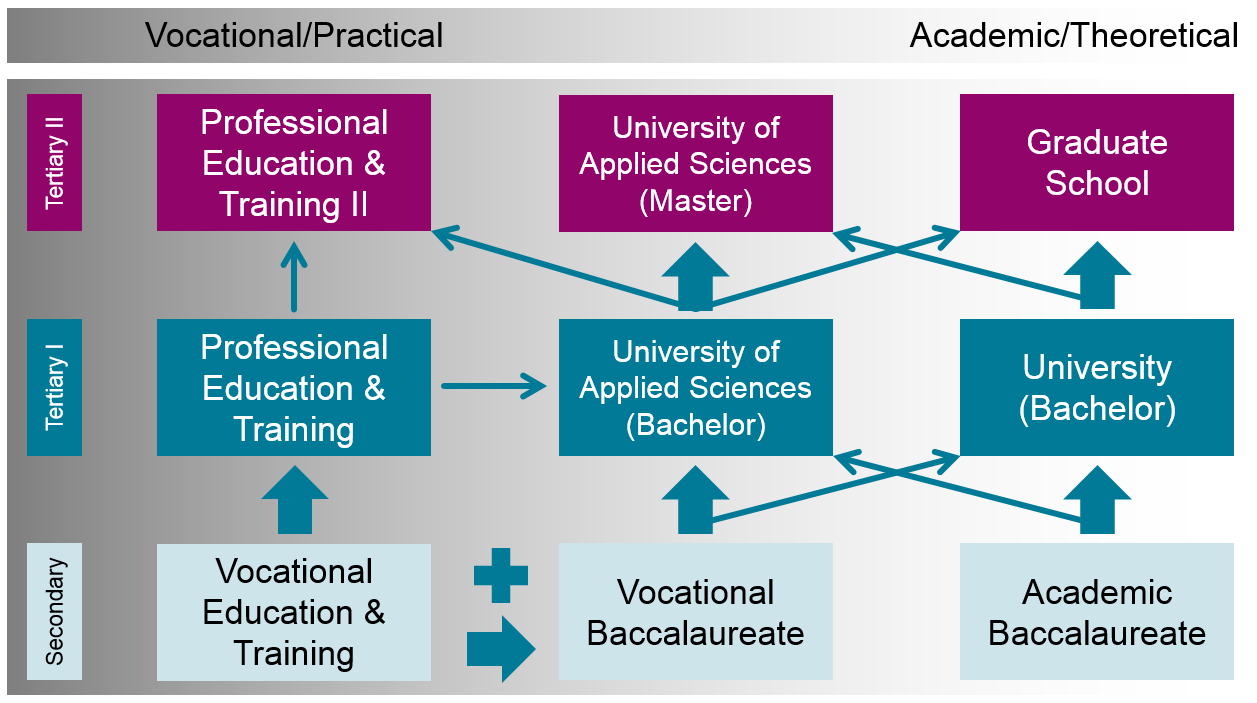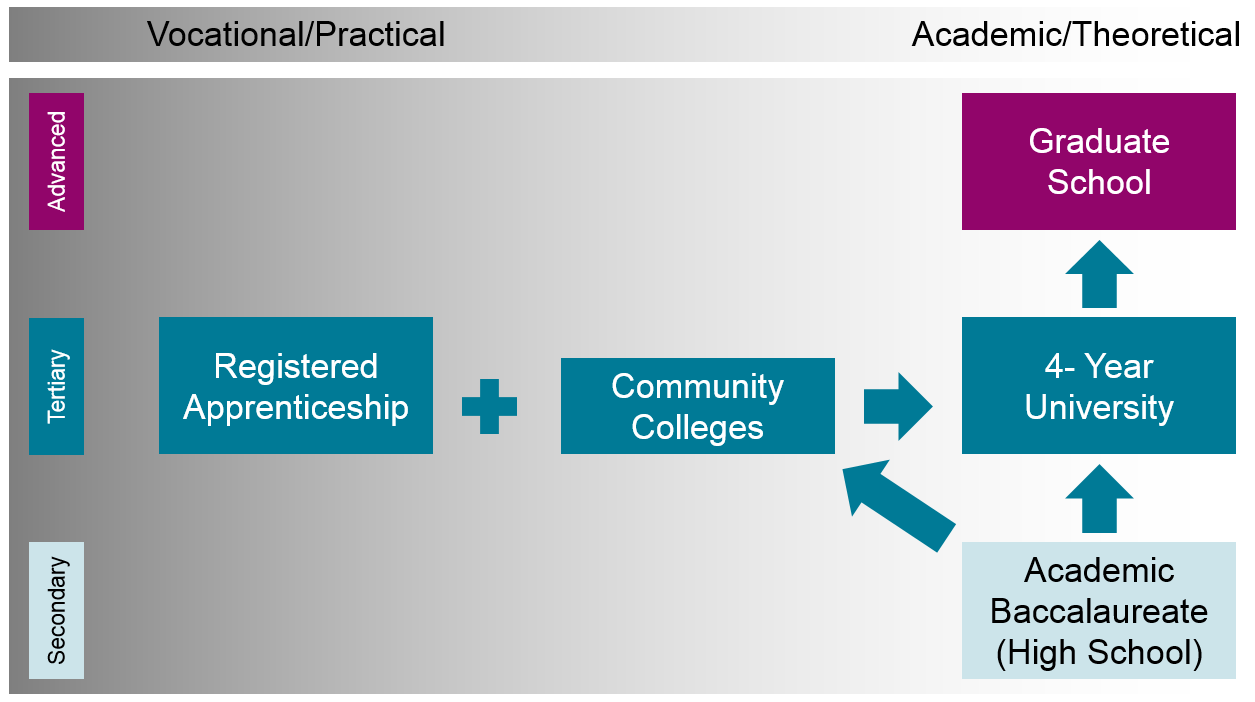Functional Differentiation and Permeability
We talk about permeability a lot, and all of the associated concepts around having no dead-end programs and building a strong VET system. For VET to be a permeable system, there need to be clear crosswalks and progression routes, as well as programs at multiple levels and across multiple types of education and training.
By Katie Caves
We talk about permeability a lot, and all of the associated concepts around having no dead-end programs and building a strong VET system. For VET to be a permeable system, there need to be clear crosswalks and progression routes, as well as programs at multiple levels and across multiple types of education and training.
If there are no transition mechanisms among programs of various levels and types, students can’t move among programs and some programs might be dead ends. More importantly, if there is only one type of education—for example and academic university pathway—then multiple opportunities to enter and leave the pathway don’t make a permeable system because there are no programs among which students can move. In other words, without functional differentiation of education programs, permeability cannot exist.
As an example, we can use a standardized and simplified version of the Swiss and American systems. In the Swiss system (Figure 1), there are programs at every level in vocational, applied, and academic pathways. The arrows in the picture show when students can move straight from one program to another (fat arrows) and when they can move between programs once they complete a clear set of additional criteria (thin arrows).
Figure 1: Simplified Swiss system
In contrast, we can look at a simplified and stylized model of the American education system. The academic pathway is clearly defined: high school, college, and graduate school are formal and connected. Employers and educational institutions alike understand those credentials, as well as society as a whole. Community colleges accept high school graduates and feed back into the university system. The Registered Apprenticeship is also a formal program that is accepted by employers, and often operates in conjunction with community colleges. However, there are no nationwide—and very few state-level—programs to fill out the rest of the system’s levels and types of education.
Figure 2: Simplified American system
Obviously these stylized systems are very simplified. They do not include non-formal programs, and they reduce complexity. Community colleges might fit into a variety of positions, depending on their goals and program offerings. However, the simplified models are still a useful way of looking at the difference between access-only permeability and access-and-opportunity permeability. American young people have many opportunities to re-enter the academic pathway, but the path to gaining practical skills is much less clear.
One danger of a system without functional differentiation is that it can become a self-reinforcing cycle. When the academic pathway is the only clear progression route, it quickly becomes the only desirable pathway. The best students choose that pathway. Companies pursue graduates of that pathway as a strategy for finding the best people. Institutions like community colleges pursue university transfer programs as the path to prestige. Statistical analyses find that the benefits of college grow and grow because there is no counterfactual option. All of this continues to feed into the strength of the one available pathway.
This makes it difficult to implement apprenticeships. System innovators have to start somewhere, but a chicken-or-the-egg problem pops up between starting with a program and starting with progression routes. There need to be at least some further education and training options for pilot-program students, including progression routes. The advantage of a pilot is that small-scale agreements are likely to work in the short term, but they have to scale up with the rest of the project. All of this ends up being worthwhile for students, companies, and societies, but it is not a simple process.


